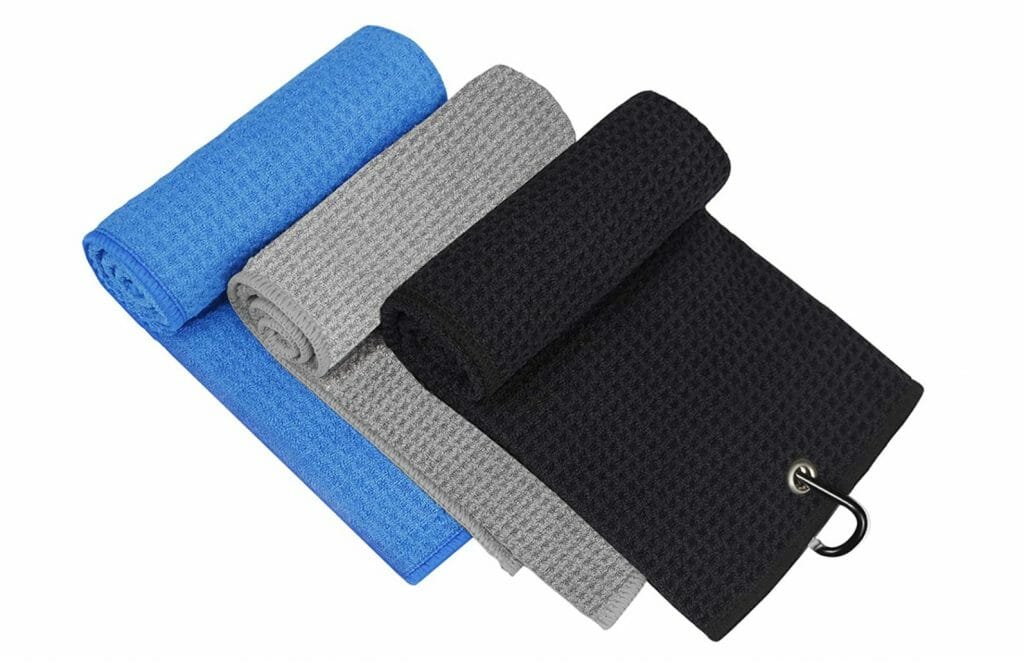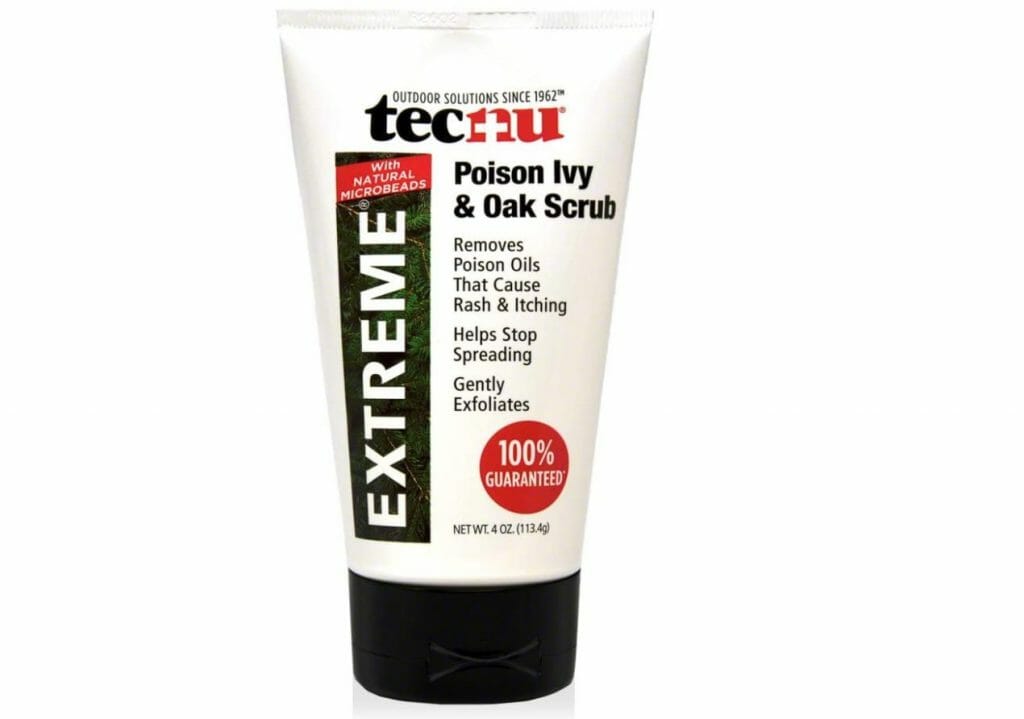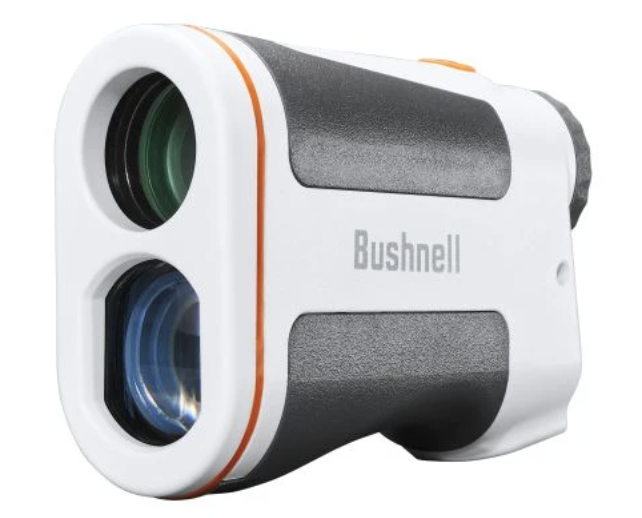All the gear you never knew you needed, crowdsourced from our community!
October 12, 2021 by Steve Andrews in Opinion with 0 comments
One of the first things I noticed as a new player was that the old veterans carried so much stuff with them during a round. While I had shown up with my new disc golf bag stuffed with discs, my playing partners had a lot fewer discs but all kinds of things I would have never thought to bring. They would pull out markers, seats, tools, food, and even items from other sports. I never thought to bring a baseball to play disc golf, but I quickly learned how easy it was to get my disc out of a tree with one. The baseball was also great for getting down the water bottle I had gotten stuck in the tree by throwing it at my disc. So many uses.
Every round, my playing partners would share some other way to stay loose, dry, or nourished, and they helped make sure I came back with all my discs. Since then, my rounds have been saved by having Band-aids or duct tape.
This sharing of wisdom among players is one of the best parts of the game, so we put out a call on Ultiworld’s social media for the best gear hacks and non-disc items you carry with you during a round. And the community answered with more than 200 comments and suggestions on Facebook and Twitter. Here are some of the best.
Getting Loose
Readers had several suggestions for ways to get loose before a round. One popular way to loosen up is the hacky sack. Another is carrying resistance bands that can be used to stretch before a round or stay warm during a delay. They are lightweight, come in lots of different levels of resistance, and can be tucked into a side pocket of a bag. One of the best (and most fun) ways to get ready to throw is playing catch, so readers suggested bringing an ultimate disc or a golf disc like a Bite, a Beetle, or a Sonic. These last molds will fit in a regular disc golf bag or cart and are also PDGA approved for use during your round.1
Staying Dry
Disc golfers love towels. If you are expecting rain, make sure to put your towels in plastic grocery bags or freezer bags so they will stay dry even if your bag gets wet. One reader suggested using a bath towel rather than multiple smaller towels to save room in the bag and a commenter asked how this could possibly work: I also use a bath towel when conditions are wet – but not raining – and it saves room because I keep it draped over my bag the whole round. Obviously, this won’t work in a downpour, but during early morning rounds or playing after a heavy rain, it absorbs better than most shop towels and dries quickly. Having it already out makes it easy to wipe off sweat or clean discs throughout the round. Also, if I can put it back in my car before I tee off, I use a different bath towel for my warmup so I can dry the dew off my discs without using up a towel I want to carry during my round.
If there is any chance of rain, you should carry an umbrella and some light rain gear. Small telescoping umbrellas don’t take much room and can work if rain is light or intermittent. If rain is probable, carry a golf umbrella that will be big enough to cover you and your bag. They are bulky but can save your round. Many disc golf manufacturers offer lightweight water-resistant jackets that can roll up and not take up much space in your bag. However, many of these jackets are not going to keep you dry during a long, rainy round. Rain gear is also an essential part of traditional golf equipment and nearly every major ball golf company makes rain gear that fits great and can keep you dry in a hurricane. My Titleist rain gear from the 1990s still works great, even though it looks like I am in a NSYNC cover band.
Even when it’s not raining, keeping your hands dry is important. Many players carry birdie bags, chalk bags, and Whale sacs to help ensure a secure grip. Several readers also suggested that hand sanitizer or alcohol wipes were the best ways to remove tree sap from hands or discs.
Feeling Good
You must have water. Bring extra water if conditions are hot or humid. Nalgenes are light and Hydro Flasks keep your water ice cold. Dehydration starts before you feel thirsty, so stay hydrated by drinking throughout the round. Rounds may go on much longer than you expect, so bringing a snack is always a good idea. I like to bring apples and fruit because they don’t weigh me down, but always keep something in the bag that won’t spoil like nuts, trail mix, or beef jerky. You never know when you will get hungry mid-round, especially during tournaments.
Many players also bring a collection of medical supplies. Band-aids are great for cuts and blisters, and many readers suggested bringing a selection of pain relievers, antihistamines, and antacids. A medical kit with tweezers and clippers is great for removing splinters and ticks.
There are a variety of sprays and lotions that can save your round. Anti-tick and anti-mosquito sprays can make summer rounds safer and more pleasant. No matter how hard I try, I can’t seem to recognize poison ivy and poison oak. It is essential to get the oils off your skin quickly, so I carry wipes and always have Tecnu Extreme, which has become an absolute lifesaver when I stumble back out of the rough. After spending a few weeks dealing with an awful poison ivy burn last year, I won’t play without Tecnu in the bag.
Wear sunscreen. I know it seems like a cliche, but as a Floridian who spent his 20s and 30s on the golf course, I now spend my 50s in the dermatologist’s office. You may think you don’t need it. You do.
Everybody Comes Home
A lot of readers had great suggestions for making sure that all your discs make it back with you. It is common for players to carry Golden Retrievers and extending Kwik-Stiks to get discs out of ponds and rivers. Another big problem is how to get discs out of trees. There seem to be two main approaches to this challenge – poles and projectiles. In the first category, some players have found that retrievers can be as valuable for reaching up into a tree as down into a lake. Another reader recommended using a heavy-duty tape measure with a long standout to reach even higher.
Some players carry golf balls, baseballs, and tennis balls to dislodge discs that are trapped up high. Others prefer lacrosse balls because they can also be used to loosen sore muscles between rounds. Multiple readers recommended using sling shots. But perhaps the most surprising idea – since I am from Florida – is throwing hockey pucks. One reader argued pucks are particularly great because they can be stored in the bottom of the water bottle holder on most bags when not needed. I have never held a hockey puck, much less thrown one, but I did just order one from Amazon.
When you get your disc out of the tree, several readers advised bringing sandpaper, an emery board, or even a grinding Dremel bit to smooth out burrs or rough edges on your discs. While it is illegal to alter the “original flight characteristics” of your discs, there is an exception for “moderate sanding of discs to smooth molding imperfections or scrapes” (Rule 813.01.B.) Feel free to sand down rough spots.
How Far
The last year has seen a revolution in the role of rangefinders in disc golf. Players, especially those like me who came over from traditional golf, have been using them for a long time but the movement of a big player like Bushnell into disc golf has made them a regular part of the game. I think that, when used correctly, they help speed up play and are an extremely valuable part of field work.
But rangefinders aren’t the only way to measure important distances. Several readers recommended using meter-long cords to determine the relief from OB or 10-meter strings that can determine whether a putt is outside the circle. One player described how they set a retractable string into the front of their Zuca cart! Another great addition to many carts is just a piece of string that can be used as a wind gauge.
Everything Else
Telephones have become a crucial part of disc golf gear for keeping score, measuring distances, course navigation, and playing music. They can also make phone calls. Given all the ways we are draining our phones during a round, bringing a portable battery is a great idea. This is especially true if you are on an unfamiliar course. One reader recommended bringing an extra phone battery so the people on the card who always say they can’t keep score because of low power on their phone don’t have that excuse.
Make sure to have sharpies to mark your disc before a competition or to have everyone sign your disc in case of an ace. Bring pencils in case you need to keep a paper scorecard. I always have duct tape because I have had to tape the front of my shoes together when my Terrex decided they had had enough of my toe dragging. Fresh socks can be a treat after you have been walking a long course or if you stepped too close to the pond. Zip ties, like duct tape, can come in handy in all kinds of ways. If you use a cart, consider bringing along a repair kit of wrenches, nuts, and bolts that you might need. No one wants to carry their cart for the last eight holes.
Feel free to bring good luck charms. These can be pins, a family picture, or anything else that helps you stay confident and play your best. I always bring extra minis because, if my putt goes south, I want to feel like I am making a change without actually changing anything. Telling myself that a new marker will fix my putting works far more often that it should.
The Ultiworld Disc Golf community offered hundreds of suggestions of things they have found to make rounds more fun or to solve problems we all encounter on the course. Some of the kindest suggestions were bringing extra discs along to offer to beginners and attaching plastic bags to their cart to pick up litter and “leave the course better than I found it.” The threads on Facebook and Twitter showed the enthusiasm and camaraderie of the disc golf community as people offered their ideas and praised others’ clever hacks. Thanks so much for lending your collective experience and wisdom.
Of course, while catch is great before and between rounds, you cannot play catch during a round since it would violate rule 809.03, which forbids practice throws. ↩





